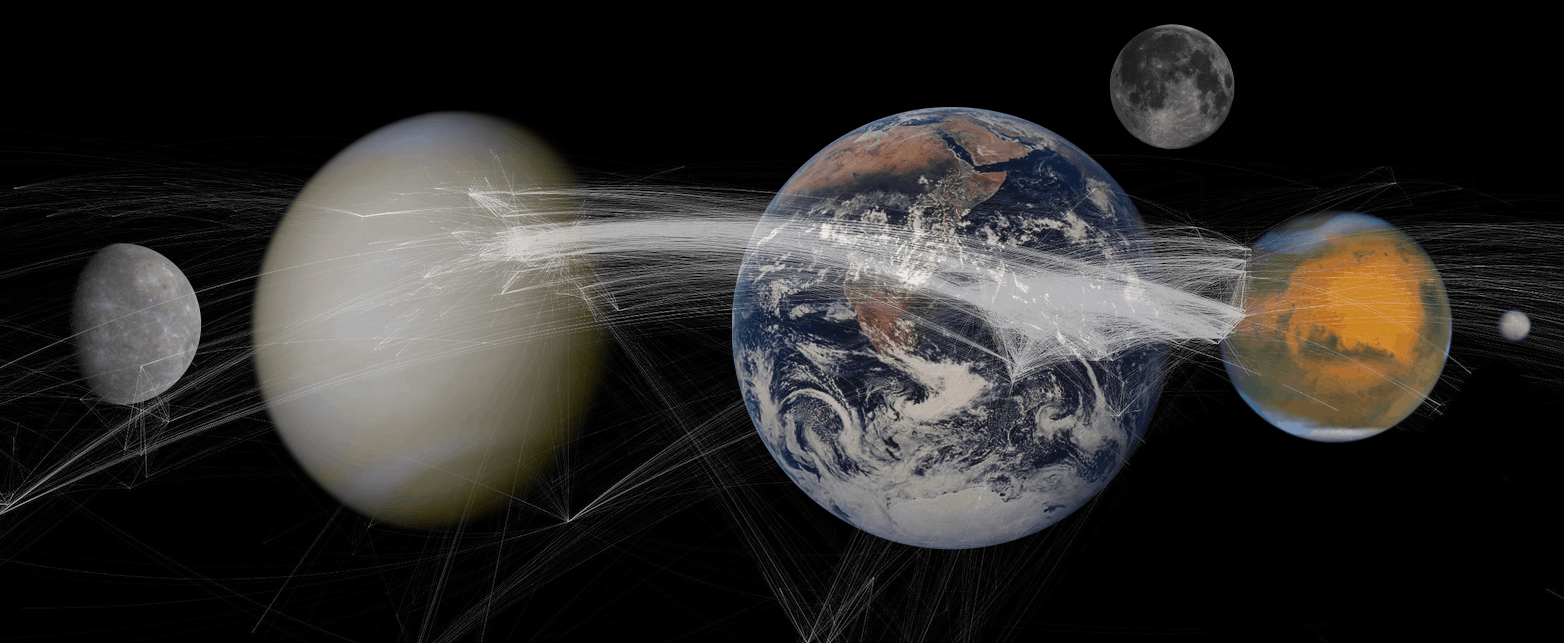Astronauts have had personal Internet access since 2010. For the moon and mars, Internet service is already being developed.
On July 18, aerospace manufacturer Blue Origin launched the New Shepard rocket into orbit.
Aboard the vehicle was a tiny router developed by Solstar — a company that aims to bring Wi-Fi connectivity to spacecraft the same way Viasat brings WiFi to commercial flights.
When the rocket reached its highest altitude of 74 miles above Earth, Solstar sent this tweet using the WiFi network:
Brought to you from above the Karman Line – this tweet from Solstar’s Space Communicator on board #NewShepard! Testing WiFi capabilities in space for space entrepreneurs everywhere. #WiFiInSpace
— Solstar (@SolstarOFFICIAL) April 29, 2018
The Solstar demonstration is one of many recent breakthroughs in the worldwide effort to bring Internet access to space. Initiatives from NASA and private companies alike are already replacing the traditional radio frequency technology spacecraft have used since the 1960s.
Increased Data Usage by Space-Based Programs
Over the past 50 years, NASA and other space agencies have relied on radio frequency (RF) technologies to maintain contact with satellites, rovers and other spacecraft that explore our solar system. But as the sophistication of space-bound vehicles and experiments have grown, so too has our data needs.
The rise of Earth observation, surveillance and remote sensing, for example, has led to an avalanche of data being collected and transmitted from satellites down to Earth; advancements in computing technologies and robotics has enabled researchers to remotely control experiments aboard the ISS and other satellites, which has required upgraded data links between the ISS and ground stations so that researchers receive data from those experiments in a timely manner.
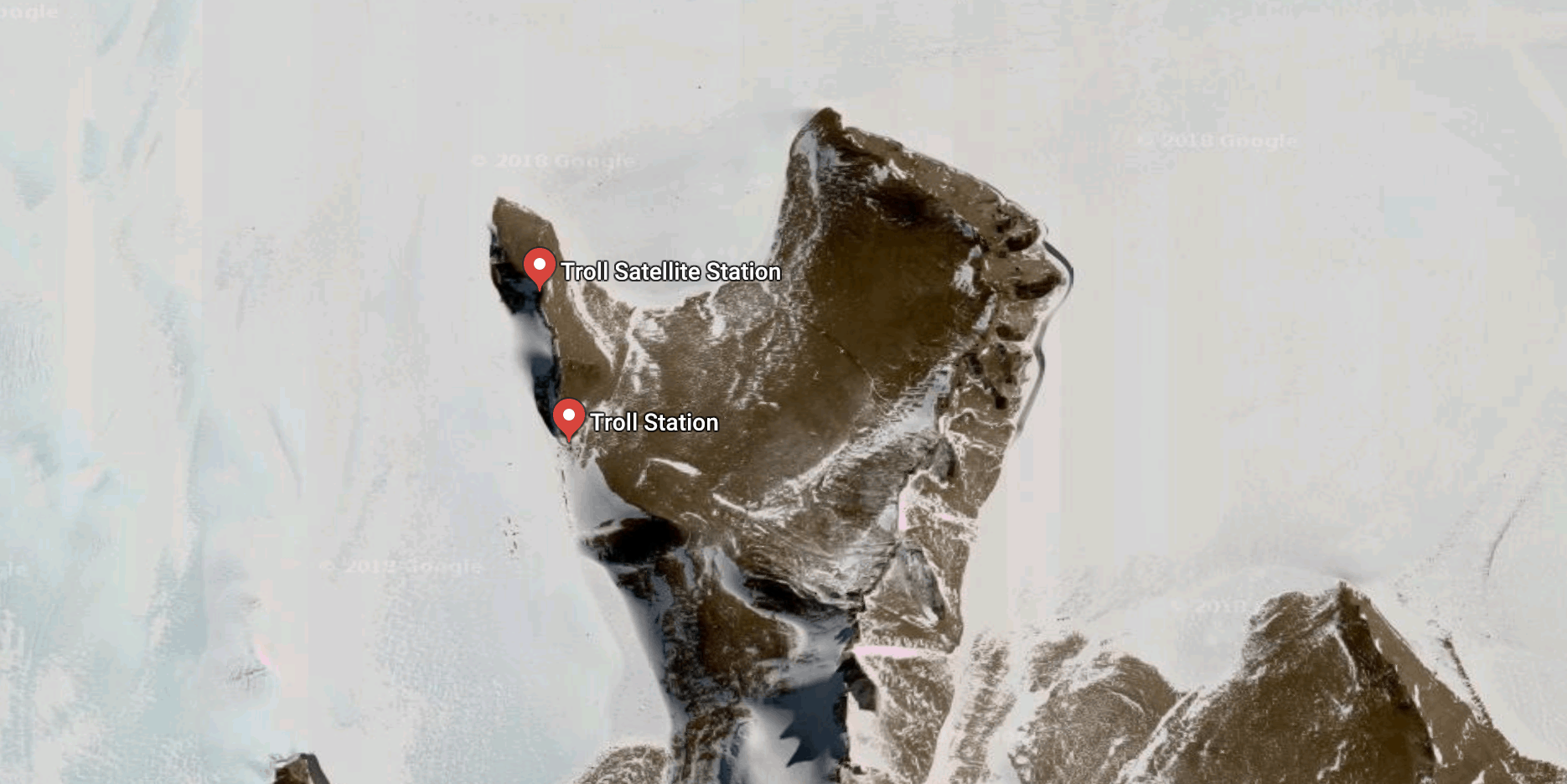
New communication systems in space also represent an important step in establishing the infrastructure needed to more fully explore the solar system. Complex deep space missions such as the Curiosity rover and future NASA missions to the Moon and Mars require more robust communication networks in space in order to maintain contact with Earth.
Finally, the recent surge in private-sector interest in space could lead to the development of more low Earth orbit stations, or even crewed habitats on the Moon, both of which will require powerful data networks to maintain contact with mission control.
NASA’s Currently-Operating Space Internet Networks
NASA currently operates three separate telecommunications networks in space, which support NASA and non-NASA missions alike:
NASA Space Network (SN)

The Space Network (SN) was established in the 1970s for communicating with satellites and spacecraft. The space component of the SN is called the Tracking and Data Relay Satellite system (TDRS). It is made up of 10 communication relay satellites in geosynchronous orbit and two ground stations. The SN offers data transfer and tracking for customers that operate Earth-orbiting satellites, and can offer 100% coverage for spacecraft in low Earth orbit. It also offers nearly continuous communication link to both the ISS and the Hubble Telescope.
NASA Near Earth Network (NEN)

The Near Earth Network (NEN) is a ground network that offers telecommunications and data services for a range of customers operating satellites in a range of orbits around Earth, including geosynchronous orbit, low Earth orbit, highly elliptical orbit. The NEN also providers communication to the Moon, which is about 250,000 miles away from Earth. The NEN uses 15 ground stations around the globe, some NASA-owned and some commercial.
NASA Deep Space Network

Consider the most sensitive telecommunications system in the world, the Deep Space Network (DSN) supports interplanetary spacecraft missions and astronomy research using radio signals. The DSN is comprised of a massive array of radio antennas around the world, with three facilities spaced equidistant from one another around the globe to ensure constant communication with spacecraft as the Earth rotates. Communication on the DSN is slow. Communication delays between Earth and Mars, for example, can range from 3 minutes to 20 minutes.
The Past: Radio Frequency Communications
Communication technology in space isn’t too much different than it is on Earth, though its logistics are made more difficult by the challenging environment of space. For one thing, all communications between spacecraft and Earth must be done wirelessly. That leaves engineers with a limited toolkit for bringing Internet to space. Most communication between ground stations on Earth, satellites and the ISS is done today via radio waves in the Ku- and S-band frequencies.
Communication to the ISS works like this: a message from Earth is sent up to a satellite in NASA’s TRDSS; the satellite receives the message and re-sends it to the ISS. The ISS orbits the Earth every 90 minutes, so satellites are used as relay points between the Earth and the space station.

Radio signals are able to propagate through most atmospheric conditions without much interference, which makes radio frequency a robust communication technology for data transfers between Earth and spacecraft orbiting Earth, particularly those in low Earth orbit, like the ISS. With radio transmissions, power is tied to the distance between the signal transmitter and the antenna receiver, which means the radio signal weakens the farther it travels. Consequently, the extreme distances in space can introduce delays, disruptions and data loss in radio frequency connections.
The Future: Delay/Disruption Tolerant Networking (DTN)

To address some of those challenges, NASA began working on a networking technology called delay or disruption tolerant networking (DTN). DTN is a computer networking model and system that can operate efficiently in environments where networks are prone to frequent disruptions, long delays and high error rates. In space applications, DTN offers more reliable data transmissions that use bandwidth more efficiently.
NASA worked with Google’s Dr. Vinton G Cerf – dubbed one of the fathers of the Internet – for a decade on the technology, and in 2008, NASA and its partners conducted the first successful test demonstration of DTN, which involved transmitting images to and from a spacecraft 20 million miles from Earth.
NASA is also collaborating with the Internet Research Task Force, the Consultative Committee for Space Data Systems, and the Internet Engineering Task Force, to develop DTN and set international standards for the technology that would enable any ground station or spacecraft to use the same communication protocol.
NASA first deployed the technology on the ISS for operations communications. It added the network to the existing Telescience Resource Kit, the software suite that enables two-way communication between researchers and their scientific experiments on the ISS. Today, there are two versions of DTN aboard the ISS: the NASA-developed Interplanetary Overlay Network (ION) and the IRTF’s DTN2.
NASA has since made the technology publicly available to the growing pool of space-interested organizations, academic and research firms, and private companies that are developing space-bound payloads.
Laser communications

NASA is also experimenting with optical lasers to transmit messages as light pulses through space. Laser beams can travel large distances in space with less signal loss than radio signals, which makes laser technology an enticing solution for deep space communications.
The main benefit of laser communication is the potential for faster data rates, and by extension larger data volumes. Lasers can propagate very far distances, and have incredibly low bit error rates.
But lasers require a significant level of precision in aiming the beams directly at the receivers. The laser beam must be pointed precisely at the receiver for successful transmission, which is not an easy task when both the sender and receiver are moving.
And while lasers can travel long distances in space, the beams are susceptible to distortion when traveling through atmosphere – which could be a problem in space-to-Earth communications as well as future interplanetary transmissions.
Optical Payload for Lasercomm Science (OPALS)
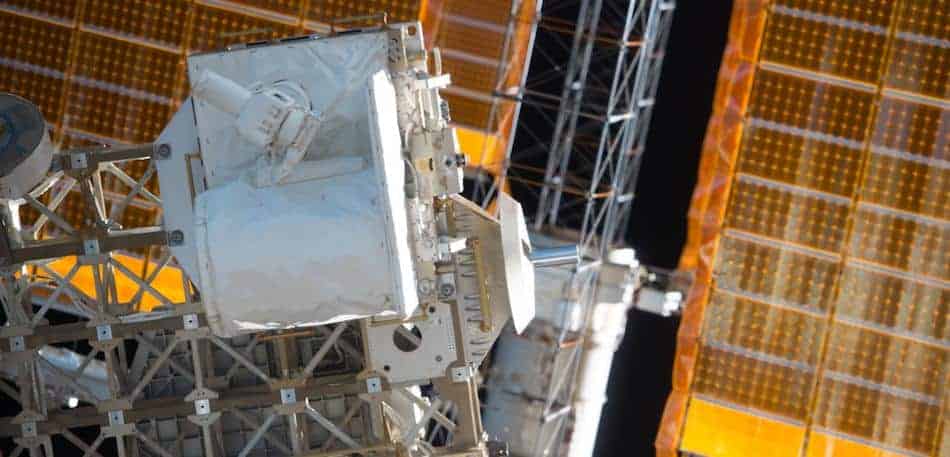
NASA is also currently experimenting with data-carrying lasers between the ISS and Earth. The agency has conducted a series of experiments using OPALS – Optical Payload for Lasercomm Science. The technology has the potential to deliver data at rates ranging from 10 to 1,000 times faster than the current radio systems.
While sending data on lasers might sound futuristic, this is actually the same technical concept behind fiber Internet. The difference with NASA’s program is that the laser transmissions are taking place in the open atmosphere, rather than contained in specially-designed glass follicles.
To address the distortion challenges of laser beams in space, NASA is working with Boeing for its adaptive optics instruments for OPALS. Adaptive optics is a technology that addresses atmospheric distortion using a high speed camera and mirrors that can detect and then correct those distortions. NASA held its first technology demonstration of OPALS in 2014.
The OPALS system has plenty of difficulties associated with it. Communication can only be facilitated when the ISS is within range of the ground station. The laser beacons – which are needed for OPAL to lock on to the receiving target – are more visible at night than during the day. And the system requires very difficult and precise beaming. Weather can also impact OPALS’s ability to track the receiver.
While multiple passes over the California station in 2014 were met with success, OPALS has had a harder time locking on to the German Aerospace Center’s ground station in Oberpfaffenhofen, Germany, or with the European Space Agency’s ground station in Tenerife, Spain. Researchers noted that weather patterns and geometry variations at these ground station locations have presented new challenges for OPALS.
First the receiving ground station emits a laser beacon, which OPALS then locks on to. OPALS then directs its laser beam that contains the data precisely onto the receiving telescope, while both OPALS and the Earth are moving. During the 2014 demonstration, OPALS transmitted a 175MB HD video message via laser beam in 3.5 seconds. The message was delivered multiple times during the 148-second transmission. During that period, OPALS on the ISS was able to keep the laser beam focused precisely on the receiver, within 0.01 degrees, while tracking at speeds up to 1 degree per second.
During a series of other passes, OPALS sent down a copy of Lewis Caroll’s “Alice’s Adventures in Wonderland,” and an HD video of the 1969 Apollo 11 moon landing. The moon landing video had been uploaded to OPALS on the ISS from Earth after launch, and NASA said it took 12 hours to send the entire video using uplink infrastructure. OPALS was able to send the video down in just seven seconds.
Laser Communications Relay Demonstration (LCRD)
Researchers are also using lasers for long-distance communications between the Moon and Earth. Laser communication technology can deliver data rates that are 10–100 times better than radio frequency technologies for long distance communications. Laser systems are also typically smaller and more lightweight than radio frequency systems, which is an important consideration for missions to the Moon, where the lowest-cost flight available costs $1.2 million per kilogram to the lunar surface.
While lasers can deliver much higher data rates than radio frequency signals in space, lasers are susceptible to light diffusion over long distances, which weakens the signal. A laser beamed from the Moon, for example, must travel some 240,000 miles through space to reach a ground station on Earth.
In 2013, NASA researchers conducted the Lunar Laser Communications Demonstration (LLCD) mission, the first successful laser communication demonstration beyond low Earth orbit. Researchers were able to beam data to Earth from a satellite orbiting the Moon at an impressive 622 Mbps. They were also able to “upload” data from Earth to the Moon at 19.5 Mbps, which represents a 4,800-factor increase in uplink data rates over radio frequency signals.
The upcoming Laser Communications Relay Demonstration (LCRD) mission, slated to launch in 2019, will build on the LLCD mission with further testing of laser communications in various environmental conditions and operational scenarios.
For the LCRD mission, two ground terminals with laser modems will send and receive messages from the LCRD payload, which will be on a geosynchronous satellite. The payload will contain two optical terminals connected to a space switching unit that acts as a router. The LCRD payload will receive a laser beam from Earth, convert the light into the message, and then re-convert that message back into a laser signal and beam it down to Earth. The mission will demonstrate various controller electronics module commands that keep the telescope pointed directly at the ground station modems.
Future Communications Solutions for Space
The new space renaissance witnessed around the globe in recent years has spurred innovations in telecommunications in space. Both private entities and government agencies are exploring news ways to communicate with space assets:
ATLAS’s first commercial deep space network & laser communications
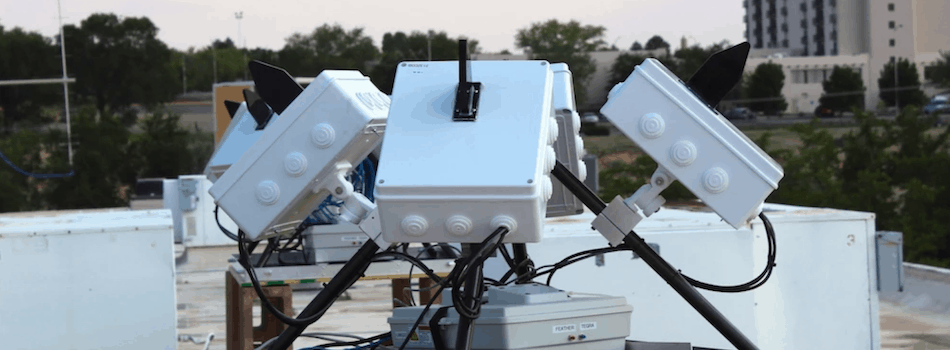
Private company ATLAS operates a satellite ground network for communications services in the UHF, S, X, and Ka-band frequencies. ATLAS has developed a proprietary cloud platform that enables low latency machine-to-machine (M2M) communications using the REST web standard. The company is currently working with NASA to develop a portable ground station network using an Internet-managed antenna system developed by ATLAS.ATLAS is also developing a deep space communications relay network. The Interplanetary Satellite Communications Network (ISCN) will likely become the first commercially-available deep space network, though the company hasn’t held a technology demonstration for the network yet. ATLAS is also working with lasers; the company has signed a deal with lunar logistics firm Astrobotic to provide the first laser communications service from the surface of the Moon, aboard Astrobotic’s Peregrine lander. ATLAS claims it’ll be able to deliver data rates up to 1 Gbps for customers from the lunar surface. Astrobotic plans to launch its first lunar mission with ATLAS in 2019.
Solstar’s Wi-Fi in space
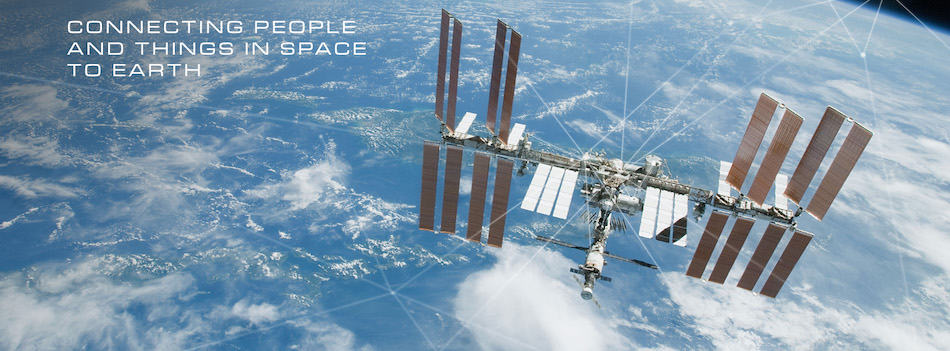
Solstar is a private startup that’s working to develop in-flight wireless connectivity for future suborbital and orbital flights. The company has developed the Schmitt Space Communicator, a small, sturdy router designed to withstand extreme conditions of spaceflight in order to provide wireless Internet connectivity aboard a rocket. Solstar has flown its communicator in a number of test flights aboard Blue Origin’s New Shepard – the most recent of which occurred earlier this month. The company’s most recent tweet from space read:
What a view of Planet Earth. Brought to you live from Space – this tweet from Solstar’s Space Communicator on board #NewShepard ! Connecting People and Things in Space to Earth #WiFiInSpace
— Solstar (@SolstarOFFICIAL) July 18, 2018
Vodafone & Nokia’s ultra compact network

Vodafone is working with Nokia to develop a 4G LTE network on the lunar surface, as part of a privately-funded scientific mission to the Moon slated for launch in 2019. Nokia’s Bell Labs is creating a space-grade “ultra compact network” router for the network, which will use the 1800 MHz frequency band. The 4G network will support data transfer from scientific payloads on the Moon, as part of the PTScientist lunar mission and scientists plan to live stream HD video from the Moon to the Mission Control Center in Berlin, Germany.
China’s Micius satellite & quantum communications

Researchers at the Chinese Academy of Sciences in Beijing have been working on developing quantum satellite communications for the future creation of an ultra-secure, space-based quantum Internet. In 2017, China’s Micius satellite was part of a successful technology demonstration of quantum communication. The Micius satellite used lasers to beam down pairs of entangled particles to two ground stations in China. It was the first successful test of quantum communication outside a lab.
Space agencies like NASA and ESA – as well as commercial companies such as SpaceX and Axiom – are now designing more ambitious missions for exploring and possibly colonizing different parts of the solar system. Telecommunication infrastructure will be an important part of those designs. And 2019 is shaping up to become a seminal year in space Internet technology demonstrations – if those missions actually launch when they are supposed to. Space missions are notoriously difficult to complete on time, however, and space agencies have been known to cancel a mission or two due to budget constraints. As with most space-based research, progress can be painfully slow, so it’s best to keep expectations down.
Timeline of Space-Use Telecommunications Milestones
-
2008 (November 18)
First Demonstration of DTN
NASA and its partners conduct the first successful test demonstration of Delay/Disruption Tolerant Network (DTN). NASA is able to send an image to a spacecraft 20 million miles from Earth. The spacecraft was also able to send the image back to Earth. Researchers claim the demonstration is the first step in establishing an interplanetary Internet.
-
2010 (January 22)
First Internet Access Deployed to ISS
NASA establishes the Crew Support LAN on the ISS, which gives astronauts remote access to the Internet. The first tweet is sent from space to the ground, unassisted by NASA. The famous tweet, sent by Expedition 22 Flight Engineer T.J. Creamer, read:
“Hello Twitterverse! We r now LIVE tweeting from the International Space Station – the 1st live tweet from Space! 🙂 More soon, send your ?s”
-
2012 (August 5–6
Telecommunication Delay nearly Crashes Curiosity Rover
NASA’s infamous seven minutes of terror: the 14-minute communication delay between the Curiosity rover on Mars and mission control on Earth gave NASA researchers a special challenge in successfully landing the rover on the surface of Mars in seven minutes.
-
2013 (October 18)
First Laser Communication to Moon Tested
NASA conducts the Lunar Laser Communication Demonstration, the first laser communication test conducted from the Moon. The mission successfully demonstrated high data rate laser communications beyond low Earth orbit.
-
2014 (June 5)
First OPALS transmission from ISS to Earth
The ISS conducts the first successful transmission to Earth using OPALS. As the station passed over the Table Mountain Observatory in Wrightwood, California, it beamed an HD video down to the ground station using OPALS. The 175MB video message said “Hello, world!” The ISS also transmitted a text file of Lewis Carroll’s “Alice’s Adventures in Wonderland” multiple times.
-
2016 (June)
ISS becomes first node in DTN
NASA deploys DTN on the ISS, making the space station the first node in what NASA hopes will become a Solar System Internet.
-
2017 (June 16)
Micius satellite demonstrates quantum transmissions
China’s Micius satellite successfully transmits pairs of entangled particles to two ground stations on Earth. The demonstration in quantum communication marks a first step towards developing a quantum Internet.
-
2018 (November 20)
First DTN transmission from Anarctica to ISS
The first selfie is sent from Antarctica to the ISS using DTN. Researchers were able to send a selfie to the ISS directly from a mobile phone equipped with DTN software
The Future of Internet in Space

The future is bright for the networking technology supporting space exploration. The LCRD mission, for example, is slated to launch in 2019, which will further test laser communications between ground stations and spacecraft.
Astrobotic’s first mission to the Moon will see laser communication data rates of 1 Gbps to the Earth using ATLAS’s laser technology.
PTScientist’s first lunar mission promises to establish a 4G LTE network on the surface of the Moon.
It’s impossible to say when the first tourists will set foot on the moon or mars. But we know this much for sure: they’ll be able to Tweet about it from the surface.
